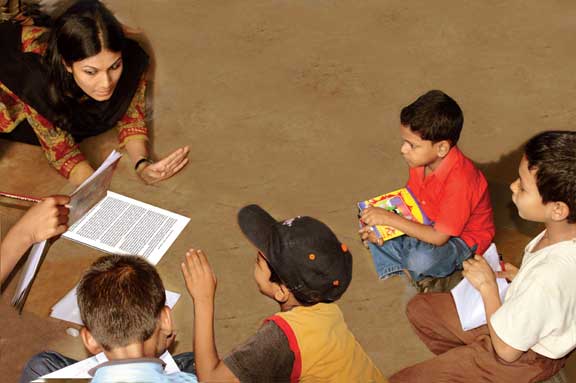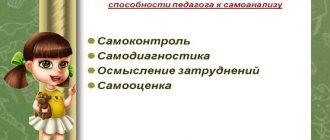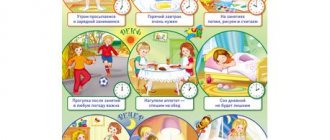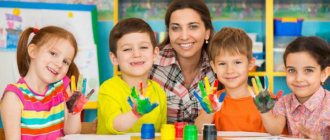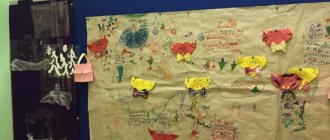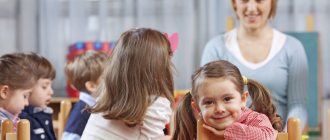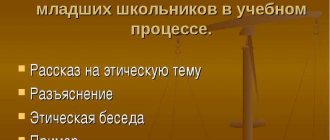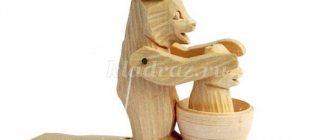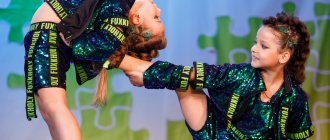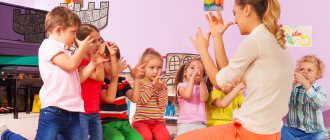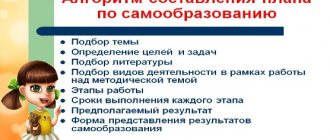Self-education report by teacher Nina Vladimirovna Grigoryan for the 2022-2020 academic year
Municipal autonomous preschool educational institution
"Kindergarten No. 49"
Teacher self-education report
Grigoryan Nina Vladimirovna
for the 2022 -2020 academic year
Berezniki
Relevance.
The Federal State Educational Standard (FSES) for preschool education sets new guidelines for the development of the preschool education system and makes a number of changes to the organization of educational activities in preschool educational institutions.
The main result of preschool education is the harmonious all-round development of the child’s personality, and not knowledge, abilities, skills.
The leading goal is to develop in a preschooler such qualities that are necessary for mastering educational activities:
initiative and independence in various types of activities - play, communication, construction;
the preschooler's self-confidence, openness to the outside world, positive attitude towards himself and others, self-esteem;
the child’s ability to actively interact with peers and adults, to participate in joint games;
the ability to negotiate, take into account the interests and feelings of their peers, empathize with failures and rejoice in the successes of others;
try to resolve conflicts, the ability to obey different rules and social norms;
development of gross and fine motor skills of the hands;
ability for volitional efforts in various fields of activity.
And for this it is necessary to introduce new technologies and methods of accompanying preschool children in the educational process.
According to the Federal Target Program for the Development of Education for 2016 - 2022. Engineering education is a priority direction in the development system of modern society.
The engineering thinking of preschoolers is formed on the basis of scientific and technical activities, such as LEGO construction and other types of construction.
Construction and robotics contribute in the best possible way to the development of attention, memory, thinking, imagination, communication skills, the ability to communicate with peers, enrichment of vocabulary, and the formation of coherent speech.
This is not just a design, but a powerful innovative educational tool that successfully solves the problem of children’s social adaptation, making the transition from play to study.
Topic:
“Constructive-model activity as an effective means for the comprehensive development of the personality of a preschooler.”
Purpose:
to study the influence of constructive-model activity of preschool children on the comprehensive development of the individual.
Tasks:
Study and summarize educational and methodological literature on the topic of self-education;
Create a card index of methodological literature and didactic games;
Adopt the best practices of teachers. Participation in the work of the problem group “LECO - design and robotics in preschool educational institutions - one of the conditions for introducing preschoolers to technical creativity”;
Replenish the RPPS group for constructive model activities;
To identify the influence of constructive-model activity of preschool children on the comprehensive development of the individual;
Involve parents in a unified educational space for child development.
During the reporting period, I worked with children of senior preschool age (5-6 years old).
Based on the results of the monitoring “Constructive-model activity”
Criteria:
He is able to establish a connection between the buildings he creates and what he sees in the life around him; create a variety of buildings and structures (houses, sports and play equipment, etc.), knows how to identify the main parts and characteristic details of structures.
Able to replace some parts with others.
Able to create buildings of different sizes and designs for the same object.
He knows how to build according to a drawing and independently select the necessary building materials.
At the beginning of the reporting period it was revealed:
low level
– 100% (20 children)
below the average
– 0%
average level
– 0%
high level
– 0%
On the basis of which she identified the problem: the low level of skills in constructive-model activity of preschoolers.
Having studied educational and methodological literature on the topic of self-education
Bedford A. “The Big Book of LEGO” - Mann, Ivanov and Ferber, 2014.
Kutsakova L.V. Construction and manual labor in kindergarten. Program and methodological recommendations. For children 2-7 years old. –M: MOSAIC-SYNTHESIS. -2010.-90 p.
Paramonova L.A. Theory and methodology of creative design in kindergarten: Textbook for students. higher ped. textbook institutions.-M.: Publishing House, 2002- 192 p.
Feshina E.V. “Lego - construction in kindergarten” - M.: Tvorcheskiy, 2012.
And having identified the problem; I decided to pay special attention in educational work with children of senior preschool age to the development of constructive-model activities of preschoolers and the creation of conditions for the comprehensive development of the personality of preschoolers.
Throughout the entire academic year, she replenished the group's teaching staff. In November 2019, a passport for the design corner in the senior group was compiled. Compiled a card index of methodological literature:
Collection of cognitive tasks of a technical orientation for preschoolers (from the experience of preschool educational institutions in the Perm region) / Institute for Educational Development of the Perm region. – Perm: 2022. – 53 pages.
Let's play together (a set of games with Dienesh blocks) / author-comp.: N.O. Lelyavina, B.B. – Corvette, 1993. – 46 pages.
Lego encyclopedia: practical guide / author: Gubanova N.V., Pyatnitsa I.A., Kotova L.N. and others - Donetsk: Origins, 2022. - 98 pp.
I play and develop with Lego. A methodical collection of games with Lego for preschoolers.
A card index of didactic games (“Legoteka”) and introduced it into work with children.
LEGO technology is one of the modern and widespread pedagogical systems that uses three-dimensional models of the real world and a subject-game environment for the learning and development of a child.
LEGO technology is a set of techniques and methods of construction aimed at achieving a specific educational goal through a system of carefully thought-out tasks. It combines elements of play and experimentation.
My passion for design began with the use of LEGO constructors in my work, working according to diagrams, according to descriptions, according to conditions. Children of senior preschool age enjoyed playing with construction sets on their own, making various types of buildings, and developing a story game based on them; constructive activities were organized on the basis of the developments of L. V. Kutsakova, I. A. Lykova.
In our shared passion for design with children, we took another step - we came up with a form of creative design based on a modeling technological idea. During the activity, children become builders. The question of “translation” of constructive activity into the technical plane by architects and creators, while playing, they come up with and bring to life their ideas. Starting with simple figures, the child moves further and further, and, seeing his successes, he becomes more self-confident and moves on to the next, more complex stage of learning.
This approach allows us to raise the design process to a new level, solving the problems of personal technical creativity and generating interest in modern technical developments.
We called our approach technological. By technology in this context we mean the procedure for manufacturing (manufacturing) any product or product in an industrial environment. Always is a certain sequential process. The main idea of the approach: invite children to create objects. Creating certain objects is a great motivating moment for work. To create you need:
— study the technology of creating an object - that is, play the role of a researcher;
- take on the role of a design engineer, inventor, capable of creating - simulating technological processes;
- take a productive position - select materials to implement ideas, carry out construction actions;
— play the role of a successful engineer presenting the created object.
Also, over the past period, the following work was carried out with children:
COP "Beads for the Christmas tree." During this practice, the children decorated the New Year tree with beads - logical figures, while learning to “read a diagram”, and consolidated ordinal counting.
Projects: “Mom is my sunshine”, “Father Frost’s Workshop”, where children were given the opportunity for creative self-realization. The pupils were able to demonstrate their creative activity and imagination, the desire to be involved in creative activities; improved communication skills.
I also worked with parents:
Consultations were held: “Children’s design. What is this?”, “The role of construction in the development of preschool children.”
Individual conversations on the topic: “Which construction set should a child buy?”
A booklet has been compiled for parents. “The importance of construction in the development of a child.”
Conducted a survey “The importance of design in the full development of a child,” which made it possible to identify the topic of the parent meeting.
Parent meeting “From cubes to robot”, at which, with the help of a slide presentation, she defined the priority directions of state policy in the field of educational development; children's technical creativity. She told and showed the types of constructors.
The children, together with children, took part in the correspondence creative competition “LEGO-city” and became prize-winners.
We also took an active part in the family competition of creative works within the group “What has progress come to?”
At the end of the year, based on monitoring results
identifying the level of development of “Constructive-modeling activity” skills
It revealed:
low level
– 0%
below the average
– 10% (2 children)
average level
– 45% (9 children)
high level
– 45% (9 children)
Thus,
As a result of the implementation of the work plan for self-education, the children of the group developed a positive attitude towards design; they can independently assemble all the models that are given in the set of tasks. They come up with interest and create their own models, play them out and tell their friends about their buildings. They learn to work in a team, distribute responsibilities and negotiate.
The set goal and tasks were completed by me in full.
The final stage of my work on self-education
was the writing of a report with a brief analysis and description of the forms and places for reporting the work done in 2019-2020:
1. An open lesson for preschool teachers on constructing a “Bridge for Pinocchio.”
2. Speech at the pedagogical council “Development of constructive activities and technical creativity in the context of the implementation of the Federal State Educational Standard.”
3. Participation in the work of the problem group “LECO - design and robotics in preschool educational institutions - one of the conditions for introducing preschoolers to technical creativity” kindergarten No. 71. Providing materials in electronic form for creating a pedagogical case: Experience in constructive activities.
— Parent meeting on the topic: “From blocks to robots.” Slide presentation “Children's technical creativity. Types of constructor".
- "Legoteka". Card index of games using Lego construction sets or its equivalent.
4. Pedagogical readings “My self-education” presentation of card files of didactic games with Lego and didactic games.
Prospects for work on the topic:
I will continue to work on this topic in the period 2022-2021, but with an emphasis on LEGO construction and educational robotics.
First direction
During the analyzed period, several play aids were prepared for children of senior preschool age:
- to activate the thought process: “Guess the shapes”, “The odd one out”, “Assemble the Christmas tree”;
- for the development of thinking: “Find identical mittens”, “Invite guests to a tea party”;
- for memory and perception: “Collect the picture”, “Find the difference”, “Guess the hero”;
- for creative imagination: “Wonderful transformations”, “Unusual portrait”.
Preview:
How to draw up a self-education plan for a preschool teacher
What is self-education and why is it needed? This process is understood as the specially organized, systematic and amateur cognitive activity of a teacher, which is aimed at achieving certain socially and personally significant goals. Why is it needed and why is a plan for self-education of a preschool teacher drawn up? Self-education is closely related to the specifics of pedagogical activity, its role in society, as well as to the currently fashionable continuous education, which is associated with the constantly changing working conditions of teachers. The whole point of this process is to satisfy cognitive activity, and its essence is to master the culture of thinking, the ability to independently, without any help, work on one’s improvement, and overcome problems, including professional ones.
Sample plan for self-education for a preschool teacher
Topics for self-education are chosen by the teacher himself. The senior teacher can also recommend them. The period within which the topic is studied can be from one to three years. The following stages are distinguished:
*Diagnostic. Contents of the work: analysis of possible difficulties, formulation of problems and study of literature.
*Prognostic. Its essence: defining goals, objectives, developing an optimal system and possible measures aimed at solving the problem at hand, predicting possible results.
*Practical. Work: introduction and dissemination of advanced pedagogical experience, as well as a system of measures aimed at solving the problem at hand, clear formation of a method complex, tracking the entire work process, its current and intermediate results, adjusting the work.
*Generalizing. Work: summing up results, processing the results
results of your own research on the chosen topic, provision of materials.
* Implementation. The essence of the stage: the use of the acquired new experience by the teacher in the process of his further work, the dissemination of the experience gained.
Forms for presenting results.
At the end of each stage of work, the teacher draws up and presents his
results. The forms in which he can do this are also included in the plan.
self-education of a preschool teacher. They can be the following: -an interview with the head of the methodological association or with a senior teacher; — speaking at a meeting of a methodological association or at a pedagogical council; — open classes; — an essay, presentation or individual creative project. It is worth noting that at the beginning of the school year, after the teachers have decided on the topics, a general plan for the self-education of the senior preschool teacher should be drawn up.
Any work must have a clear structure; we offer you one of the design options for what a self-education plan for a preschool teacher might look like. First, indicate the title of the work, for example: “Individual self-education plan” (indicate the year). Next, indicate your position. It is worth noting that the design of the self-education plan for a teacher of a junior group, middle or senior group will not fundamentally differ from one another. Next, indicate your full name. teacher, his education, as well as advanced training courses. Then you should indicate the topic of self-education, the problems to be worked on, the deadlines, as well as tasks and goals.
How and in what way can the process of professional development be organized?
In order to be in the trend, a modern teacher needs to systematically follow news in the field of preschool pedagogy and psychology, become familiar with the best pedagogical practices, be in constant communication with colleagues, work to increase general erudition and improve pedagogical skills, and become familiar with the legal and regulatory framework. preschool education and analyze your own professional experience.
Additional teacher development is a mandatory part that is included in the self-education plan of a preschool teacher according to the Federal State Educational Standard. The plan helps to systematize the work, is a reflection of the effectiveness of the teacher’s activities, and creates opportunities for prospects for communication with children.
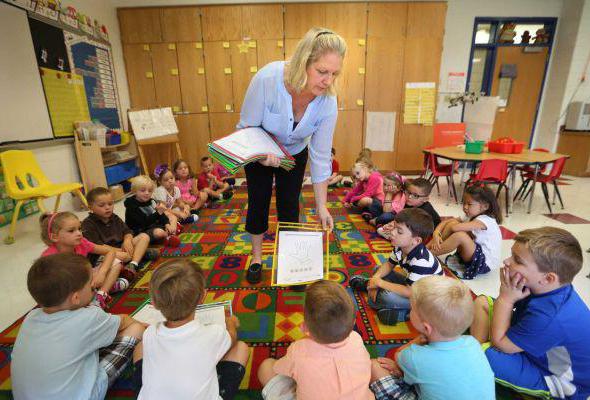
Organization of work by topic
Each topic requires analytical work. When analyzing literature, the teacher must highlight the main thoughts and ideas of the authors in order to determine the direction of work on this topic. For example, if the topic “Spiritual and moral education of preschool children” is chosen, the teacher needs to pay special attention to the methods of organizing and the general content of work on this topic in various age groups of the kindergarten.
One of the urgent tasks of education in kindergarten is environmental education. How to draw up a self-education plan for a preschool teacher according to the Federal State Educational Standard? Ecology, for example, should include classes and conversations to familiarize oneself with the nature of one’s native land, experimental activities, and work with parents to promote the development of environmental knowledge in preschool children.
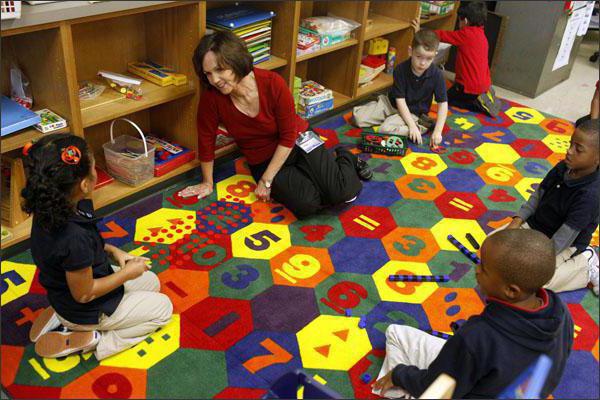
The self-education plan of a preschool teacher of a junior group should cover work on assessing the capabilities, physiological and psychological characteristics of children of this age category, identify the range of problems related to working with younger preschoolers, and include the use of interactive teaching methods and modern early development techniques. Work on the topic can be carried out with the participation of several teachers who are directly familiar with the tasks and goals of the preschool educational institution. A properly organized process of self-education provides great opportunities for deeper personal development and effectively improving the professional competence of a teacher.
Day care center
Recently, educational institutions have been organizing not only educational activities for elementary school children, but also offering extracurricular work, expressed in an extended day group. Like all other employees of an educational institution, an afterschool teacher draws up a work plan and engages in self-education. The self-education report of the GPA teacher includes a description of the extracurricular activities that he carries out in his daily work.
For example, you can indicate those activities that were invented for primary schoolchildren, note their purpose, main tasks, and implementation.
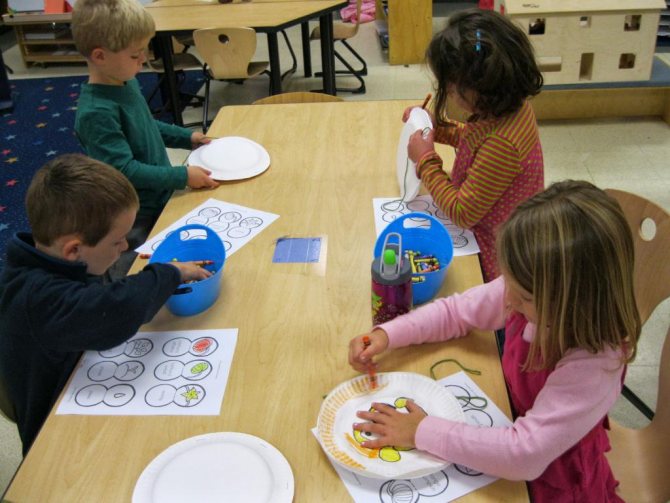
How to choose a topic? Tips for educators
The self-education plan for a preschool teacher according to the Federal State Educational Standard requires careful preparation, during which a lot of questions arise. The main issue is the choice of topic. A methodologist or senior educator mainly helps with this, but the teacher can also make an independent choice, depending on the relevance and practical significance of the topic of educational activity.
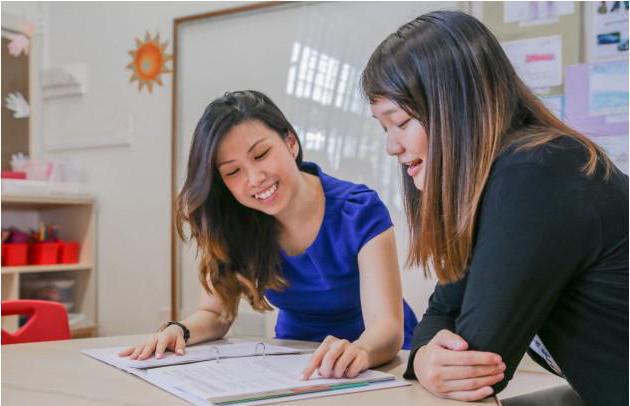
In determining their readiness for self-education, young specialists are also recommended to familiarize themselves with the map of G. M. Kodzhaspirova. The self-education plan for a preschool teacher according to the Federal State Educational Standard must be drawn up taking into account the following recommendations:
- When studying any issue, you need to research several sources in order to form your opinion.
- It is advisable to work with library catalogs and material from the Internet in order to obtain the necessary literary source.
- When searching for material, it is important to focus on innovative methods in education.
- Communication and exchange of experience with colleagues is an important aspect of teacher self-education.
An individual self-education plan is drawn up in two types:
- Annual planning
- Long-term planning, which provides for annual revision of the educational activity plan
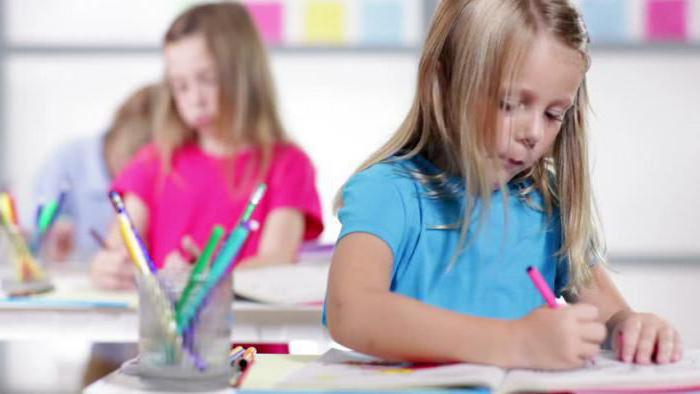
If an individual self-education plan is drawn up according to the second type of planning, you can use the project method appropriate to the age of the children. Long-term planning must certainly include current issues of preschool education in dynamic development.
Second direction
Work with preschoolers was carried out to develop the following cognitive abilities:
- thinking;
- attention;
- memory and perception;
- speeches;
- creative imagination.
The activities were built in stages, taking into account the individual and age characteristics of the pupils. When choosing didactic games, the mental capabilities of preschoolers, as well as their interest in various games, were taken into account. To attract the attention of children, unusual moments were used, for example, children had to help the hero cope with the task.
